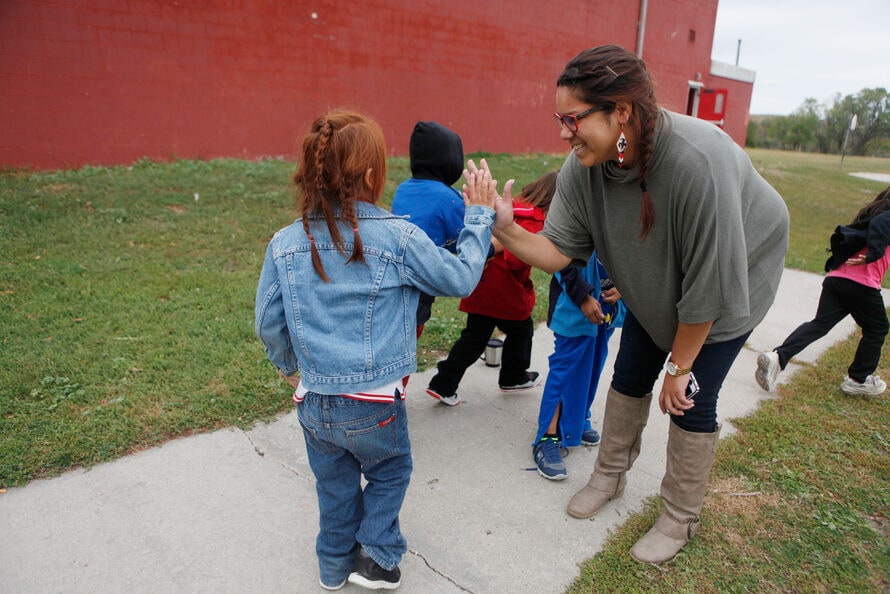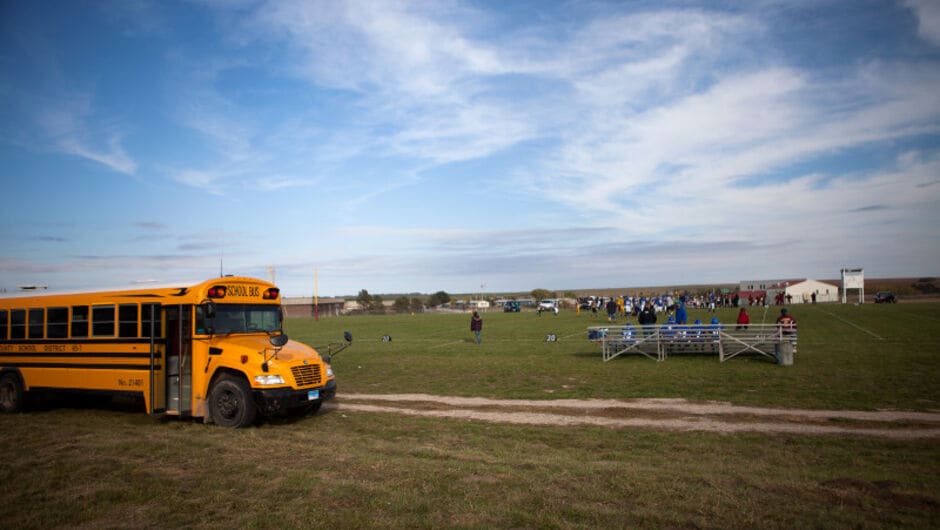South Dakota

About Us
Nine sovereign Lakota, Dakota, and Nakota nations lie within the state borders of South Dakota. Leaders within these nations protect and maintain the culture and sovereignty of the Oceti Sakowin.
Many indigenous families struggle with access to healthcare, housing, and employment, and the educational landscape is in stark contrast with that of the state's more affluent communities. Fewer than 10 percent of Native adults hold a bachelor's degree, and among students living on reservations, less than one in three reads on grade level. High school graduation rates hover around 50 percent. Yet these often-repeated statistics only tell part of the story. Tight-knit and family-oriented, indigenous communities in South Dakota continue the long work of liberation with humor, strength, and commitment to local visions of self-determination.
In 2004, Teach For America established a partnership with communities of the Oglala Lakota and Sicangu Lakota Nations (also known as the Rosebud and Pine Ridge Reservations) with 17 corps members. Today our educators work shoulder-to-shoulder alongside community partners to ensure Lakota youth experience learning, wholeness and belonging, and self-determination.
Join Our Tiospaye
Where You'll Teach
In South Dakota, 100 percent of our corps members teach within a Tribal Nation, and virtually all of our students are Lakota. The schools we partner with are in the Sicangu Lakota and Oglala Lakota Nations, which are located across the south central and southwest parts of the state, respectively. Most corps members live in close proximity to the schools in which they teach, almost always on the reservations themselves, and become active members of their communities.
Our region is one of striking physical beauty, steeped in a complex history that has shaped the lives of the Indigenous Lakota people. Todd and Oglala Lakota Counties are situated at the foot of the scenic Black Hills, or Paha Sapa, which hold tremendous spiritual significance for the Lakota people and are viewed as the heart and soul of their culture and history. Bordering our communities, the rugged beauty of the eroding formations of the Badlands hides fossils, deer, prairie dogs, bighorn sheep, black-footed ferrets, bison, and more.
It is an honor and privilege to live and teach within sovereign nations, where many of our corps members are guests. Communities are tight-knit and supportive, and opportunities for involvement with arts, culture, sports, and the outdoors abound.


Support Us
Your generosity helps build a force of leaders working from all angles to expand educational opportunities for Lakota students.



